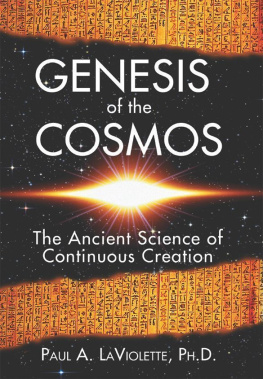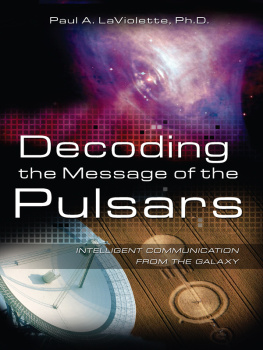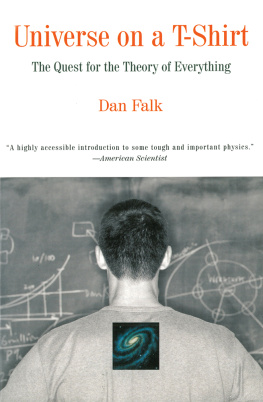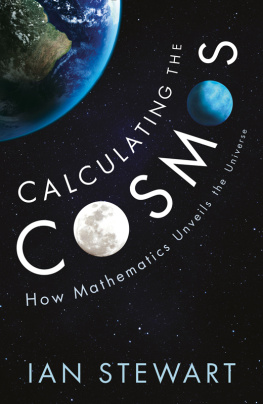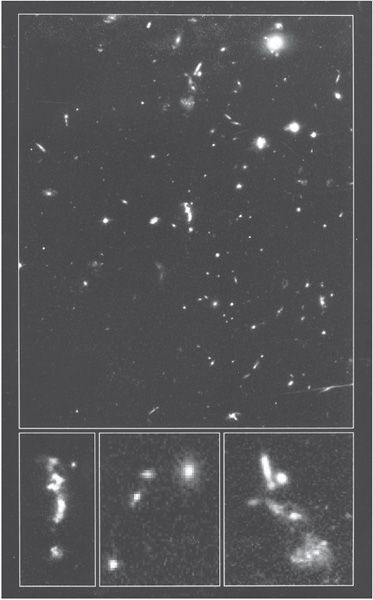
Distant cluster of galaxies as observed by the Hubble Space Telescope. Photo courtesy of NASAs Space Telescope Science Institute.
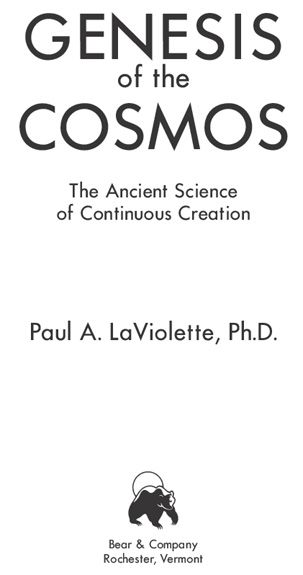
CONTENTS
PREFACE
NOT ALL SCIENTIFIC DISCOVERIES come about as a result of a long and arduous transcendental journey. However, this one did. It began one night in the spring of 1968 when a series of insights began flooding into my mind, concepts at once simple yet of considerable advancement. The ideas themselves were as amazing as the manner in which they were coming to me, as if sensed from some other level. Superimposed on the background of the music I had been listening to in my Johns Hopkins dorm room came notions of flux, balance, and dynamic equilibrium. I was shown these principles harmonizing together, forming the very essence of existence. Like an attentive pupil, I absorbed them.
There seemed to be an urgency about the whole affair. I was given to understand that, sometime back during the course of its development, Western science, or more specifically physics, had mistakenly taken the wrong turn. It was not that its experiments were improperly construed or that its observations were improperly made; it had to do with the theoretical framework that had been set up to interpret them. The errors were at a very basic assumptive level. I was shown that the classical physicists view that physical reality is comprised of inert structures at its most basic level was wrong. I saw that nature at its most fundamental level is instead in perpetual balanced change, like life itself.
This new ecological metaphysics filled me in the months that followed. I began seeing how, through recurrence, natural processes formed the enduring systems around us, atoms, living organisms, solar systems, galaxies, and so on. I understood that there was hierarchical structure to this vast chain of being, with systems nested within systems in a repeating manner. And so began the formulation of my theory of existence, a theory of systems founded on the principle of process.
Almost five years later, I discovered, with some relief, that others had followed this same path. Seminal thinkers such as Ludwig von Bertalanffy, Kenneth Boulding, and others had banded together seventeen years earlier and formed the Society for General Systems Research, which now had a membership of over a thousand. Here was not one individual, but a whole society of scientists who, like myself, were studying the fabric of nature and finding it to be governed by specific laws of organic process. And there were others who had also blazed the way, such as Pierre Teilhard de Chardin and Alfred North Whitehead. The burden of responsibility to communicate these basic truths to others was lifted from my shoulders.
But my journey was far from finished. At about that same time, I had become engrossed in learning about a new branch of thermodynamics that studied how certain systems whose constituents abide in a state of incessant flux spontaneously generate orderly patterns from their internal chaos. Writings by Prigogine, Nicolis, and others; a picture of exotic chemical waves spiraling on the front cover of Science magazine; a paper by Einstein speculating on the fundamental nature of matterall these combined together one night to spawn in an insightful flash a new theory of microphysics. A new dimension had opened up for me, and I was for some days sensing the flux in all things, even in rocksthings that my former academic physics training had taught should be lifeless.
When it first came forth, the theory was crudely formed. It would take several years to hone and refine its concepts. This new approach to subatomic physics, which I later came to call subquantum kinetics, was based not on mechanics but on chemistry, not on static structure but on process. This new microphysics followed an avenue that had been overlooked by eighteenth- and nineteenth-century ether theorists for the simple reason that chemical waves and dissipative structures had not yet been discovered at that time. The only models then available for understanding wave and particle phenomena were mechanical in nature. Subquantum kinetics was not just pleasing from a philosophical standpoint. It surpassed conventional physics in a number of respects. It explained the origin of matter and energy, the structure of matter, how force fields arose, and how they induced movement. It could also solve many of the problems that plagued standard physics.
As the theory took shape, I realized that a new mission once again lay ahead of me, a responsibility to communicate a discovery of great importance. As before, I was to find that others had followed this path. But in this case, these former theorists lived in an era much further back in time, before the dawn of recorded civilization.
This shocking discovery happened in 1975 while I was working as a consultant in Boston. A friend, after hearing me describe subquantum kinetics, commented that the basic idea sounded a lot like the Tarot metaphysics and urged me to take a class on the subject. Several weeks later I noticed that a weekly adult education class on the Tarot was scheduled in the Harvard Square area, so I decided to attend.
After the first few lectures it became apparent that there was indeed a strong similarity between the symbolic meaning of the major Tarot arcana and concepts basic to my process physics. I recognized that the Tarot was describing the science of system genesis, the process by which ordered forms (systems) spontaneously spring into being. More specifically, it was presenting a theory of how our universe came into being!
I was stunned. Here was a physics based on systems principles discovered mostly in the latter half of the twentieth century that were known to people many thousands of years ago. All that I had learned about Western civilizations rise from a primitive past lay hopelessly shattered.
The next year I moved to Oregon to begin work at Portland State University on a doctorate in general system theory. This was one of the few universities in the world offering a degree in this fascinating field. While there, I continued refining subquantum kinetics and made a major theoretical breakthrough in the summer of 1978. 1 also continued investigating the ancient roots of this esoteric physics. I had found that this science of creation was not unique to the Tarot. The same principles also appeared in the symbology of astrology, in the I Ching, and in certain ancient myths describing the worlds creation.
After years of hard work, my theory of subquantum kinetics was finally published in 1985 in a special issue of the International Journal of General Systems. Subsequently, many of its astronomical and cosmological predictions were published in a number of other scientific journals. In 1994, I published a book on the theory entitled Subquantum Kinetics (see www.etheric.com). Now it is time that the full story about its ancient origins is known. This book reveals for the first time advanced scientific wisdom that has remained hidden for so long in our ancient myths and esoteric lore. Consider this legacy left by our predecessors and wonderwho were they?

I would like to thank my father and mother, Fred and Irene, for the long hours they spent helping me edit this manuscript. I would also like to thank my sister Mary, Larry Svart, Ann Richards, Marilyn Ferguson, Rosemary Loeine, Tom Abshier, Carolyn Halsey, Rosi Goldsmith, and others for their editorial assistance.
Next page
